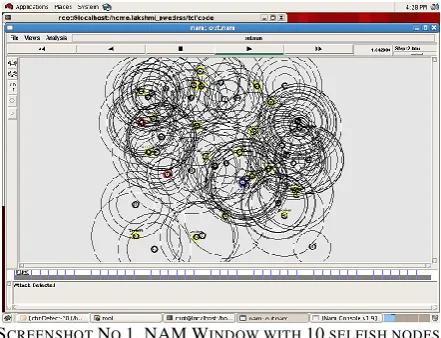Analysis of Energy Drain Rate for Selfish Scheduler in Manets
Full text
Figure




Related documents
The performance is evaluated by packet delivery ratio, delay, energy consumption, and throughput with considering the mobility of each node to be selected as cluster head.. The
Salujaritu and Nisha[12]compared AODV and DSR on basis of four performance metrics- packet delivery ratio, throughput, routing load and end-to-end delay by varying
There are several parameters of QoS are Throughput, Jitter, Packet Delivery Ratio, Network Span, Energy and more.The proposed paper has used the TDMA scheme along
In this paper a comparative performance analysis of routing protocols (DSR ,STAR and LAR) has been done on the basis of energy consumption ,packet delivery ratio, jitter and end
Figure-5 Outside the coverage area packet delivery ratio and time taken to transfer the packets. Figure 6 :Node cover for outside the coverage
Based on Fig 5(b) it is shown that EBAODV performs better than DSDV but gives less packet delivery ratio as compared with AODV this is the main drawback of EBAODV because
The simulation results obtained for low- and high-density networks confirm that TORA performs better for networks with low node density in term of packet delivery ratio,
In this research, CH node selection is performed by using PSO algorithm based on the lower energy consumption, distance and higher packet delivery ratio values